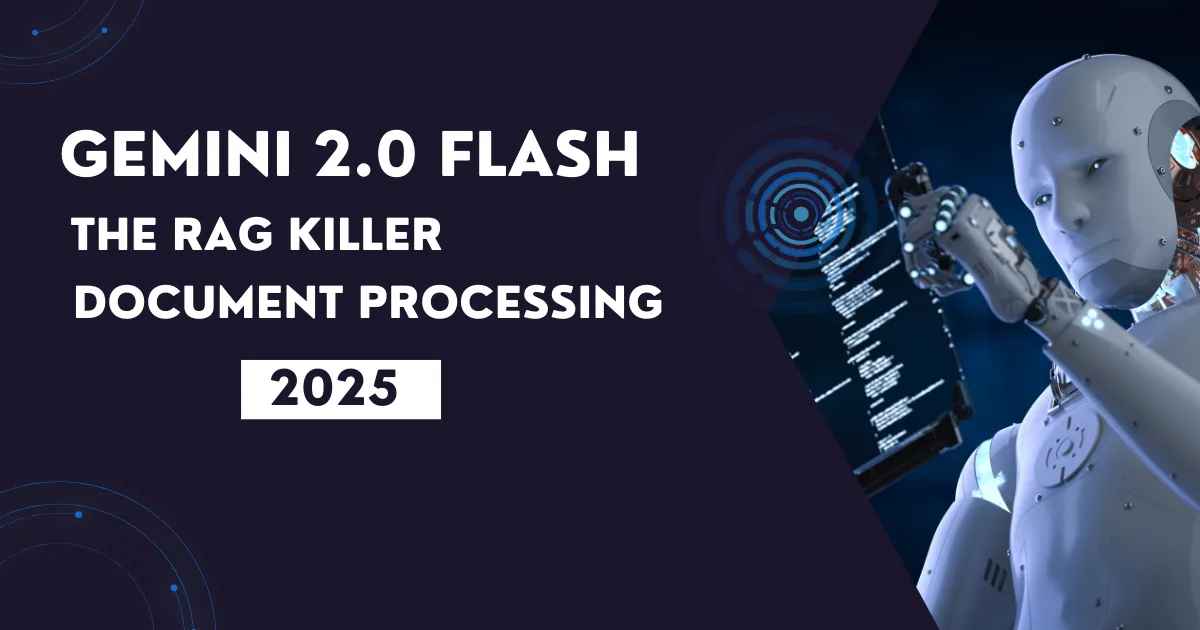In the ever-evolving landscape of artificial intelligence, Google’s latest breakthrough, Gemini 2.0 Flash, is creating waves that are reshaping how we process and analyze documents. This groundbreaking development isn’t just another incremental improvement – it’s effectively making traditional Retrieval-Augmented Generation (RAG) systems obsolete. In this comprehensive analysis, we’ll explore how Gemini 2.0 is transforming document processing and why it’s being hailed as a RAG killer.
Understanding the Traditional RAG Landscape
Before diving into Gemini 2.0’s revolutionary features, it’s essential to understand why RAG systems were necessary in the first place. Traditional large language models (LLMs) faced significant limitations, particularly in their ability to process large documents. These early models typically operated with context windows of 4,000 to 8,000 tokens, approximately equivalent to 3,000-6,000 words. This limitation led to the development of RAG as a workaround solution.
The traditional RAG workflow involved several complex steps. Documents needed to be broken down into smaller chunks, typically 256-512 tokens each. These chunks would then be converted into vector embeddings, stored in databases, and retrieved during query processing. While this approach helped overcome the limited context window problem, it introduced several significant challenges.
One of the most pressing issues was information fragmentation. When documents were broken into chunks, the contextual relationships between different sections were often lost. This proved particularly problematic when dealing with financial reports, legal contracts, and technical manuals, where understanding cross-references is crucial. Additionally, the computational overhead of maintaining vector databases and implementing retrieval mechanisms added unnecessary complexity to application architectures.
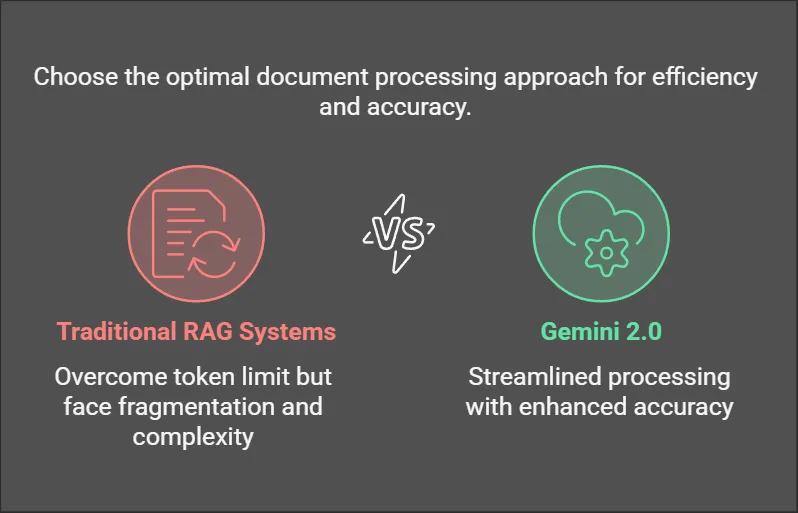
Perhaps most concerning was the accuracy degradation. Research showed that even the most advanced retrieval systems could only achieve 85-90% recall rates. This meant that valuable information was potentially being missed during analysis, particularly in scenarios requiring comprehensive document understanding, such as analyzing lengthy earnings call transcripts.
The Game-Changing Features of Gemini 2.0
Google’s Gemini 2.0 Flash introduces three revolutionary capabilities that directly address these limitations and fundamentally change how we approach document processing
Unprecedented Context Processing Power
The most striking feature of Gemini 2.0 Flash is its massive context window of 1 million tokens – equivalent to approximately 750,000 words or 1,500 pages. This represents a staggering 250-fold increase compared to the 4,000-token limits common in 2023. More importantly, the model maintains near-perfect information retrieval accuracy (over 99%) across its entire context window, enabling reliable analysis of complex documents without any information loss.
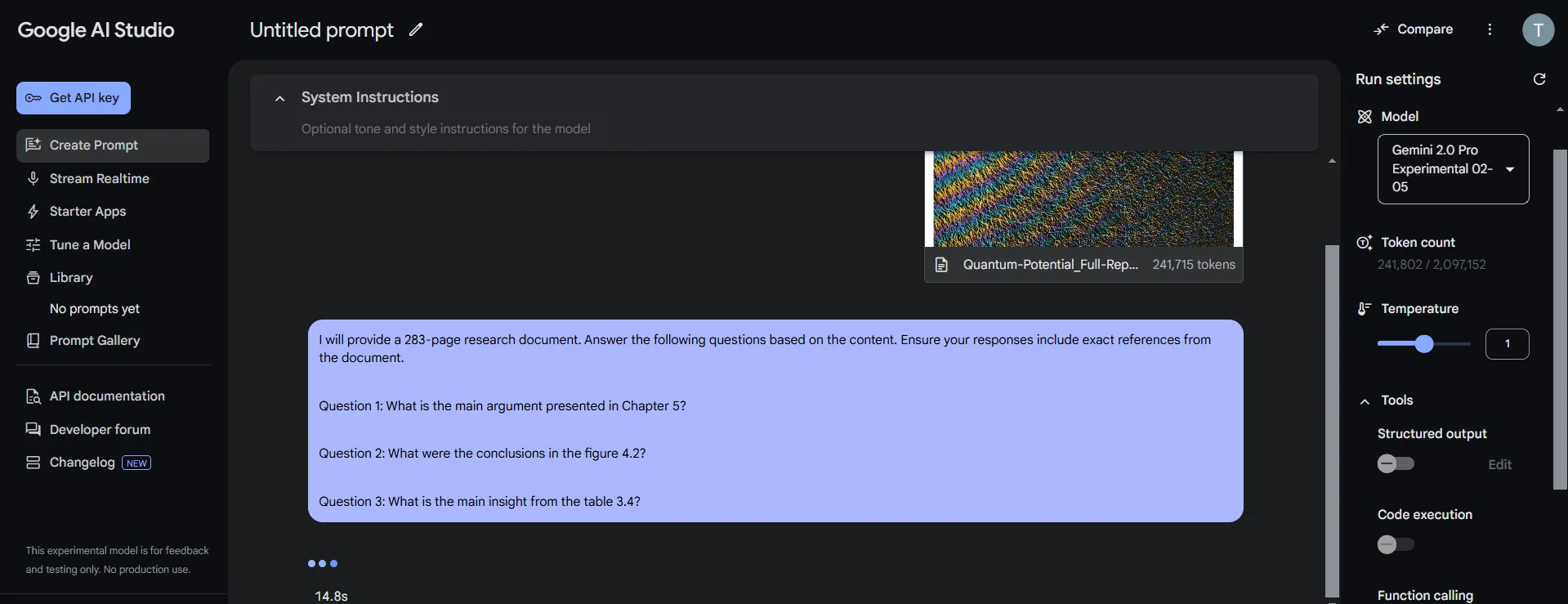
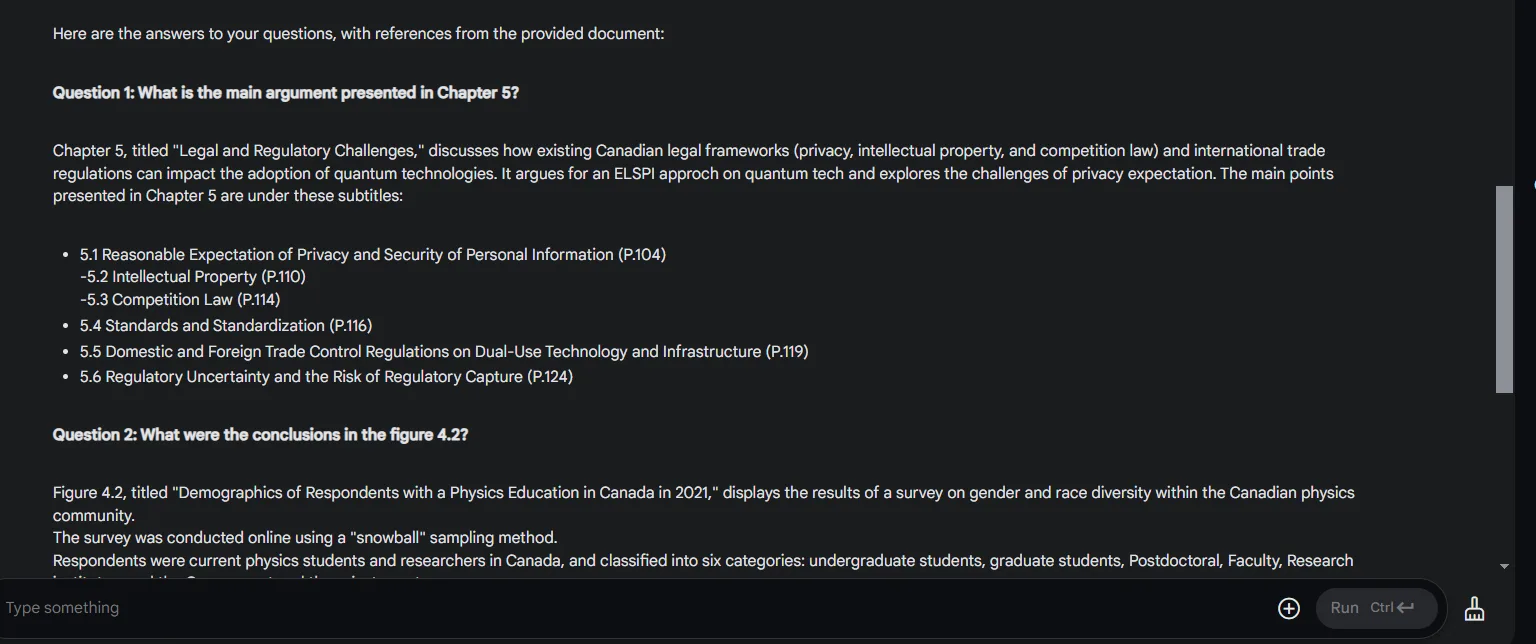
Advanced Multimodal Processing
Unlike its predecessors, which needed to convert images and audio to text for processing, Gemini 2.0 Flash processes multiple types of input natively. This capability has shown impressive results, with the model correctly interpreting 93% of complex infographics from SEC filings, significantly outperforming traditional chunk-based RAG systems, which only achieved 78% accuracy.
The native multimodal understanding extends to:
- Financial charts and diagrams in PDF reports
- Engineering schematics and their spatial relationships
- Audio recordings, including tone and cadence analysis
Autonomous Processing Capabilities
Gemini 2.0 Flash introduces powerful autonomous code execution features that enable direct integration with external systems. This advancement is particularly valuable for SaaS analytics applications, where the model can handle massive datasets, create Python visualizations, interact with CRM systems through APIs, and generate executive summaries – all without requiring separate data processing pipelines.
The Death of Traditional RAG: A Use Case Analysis
The impact of Gemini 2.0 on RAG workflows varies depending on the complexity and scale of document processing needs. Understanding these differences is crucial for organizations considering a transition to this new technology.
Single Document Processing: A Complete Transformation
For documents under 1 million tokens, Gemini 2.0 completely eliminates the need for traditional RAG systems. This transformation is particularly evident in healthcare applications analyzing medical trial reports. The results speak for themselves: processing times have improved by 40%, dropping from 3.5 seconds to just 2.1 seconds. Even more impressive is the 22% improvement in diagnostic accuracy.
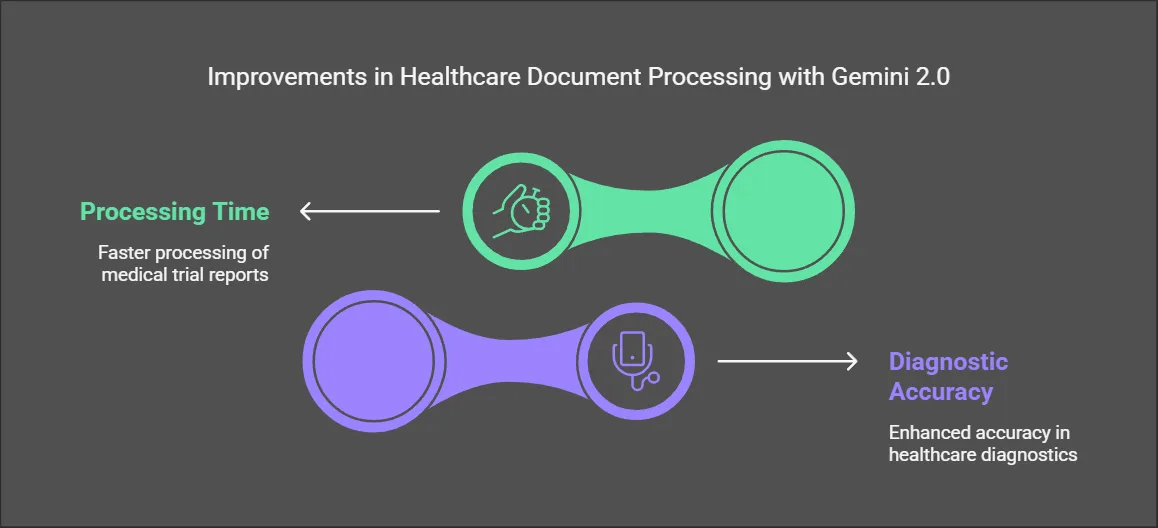
The legal sector provides another compelling example of Gemini 2.0’s superiority. When analyzing legal contracts, the model successfully identified 98% of interdependent clauses, compared to just 74% with traditional chunk-based RAG systems. This dramatic improvement in accuracy has significant implications for contract review and compliance processes.
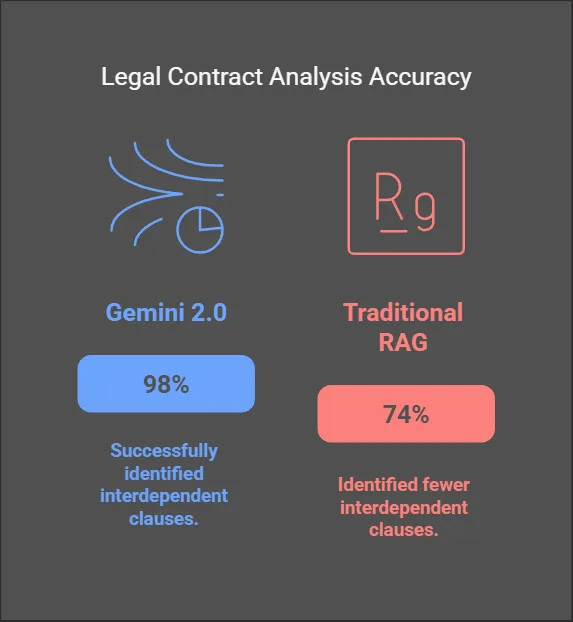
Handling Large Document Sets: A New Hybrid Approach
While Gemini 2.0 excels at processing individual documents, handling large document collections exceeding 1 million tokens requires a modified approach. This new hybrid methodology combines the best of both worlds:
First, relevant documents are identified using traditional semantic search methods. Then, these documents are processed in their entirety by Gemini 2.0 Flash, allowing for comprehensive analysis and cross-document synthesis. This approach has proven highly effective, showing a 35% accuracy improvement over chunk-based RAG when analyzing large patent document collections.
The Business Case: Economic and Operational Benefits
The transition from traditional RAG to Gemini 2.0 brings substantial economic and operational advantages that make a compelling business case for adoption.
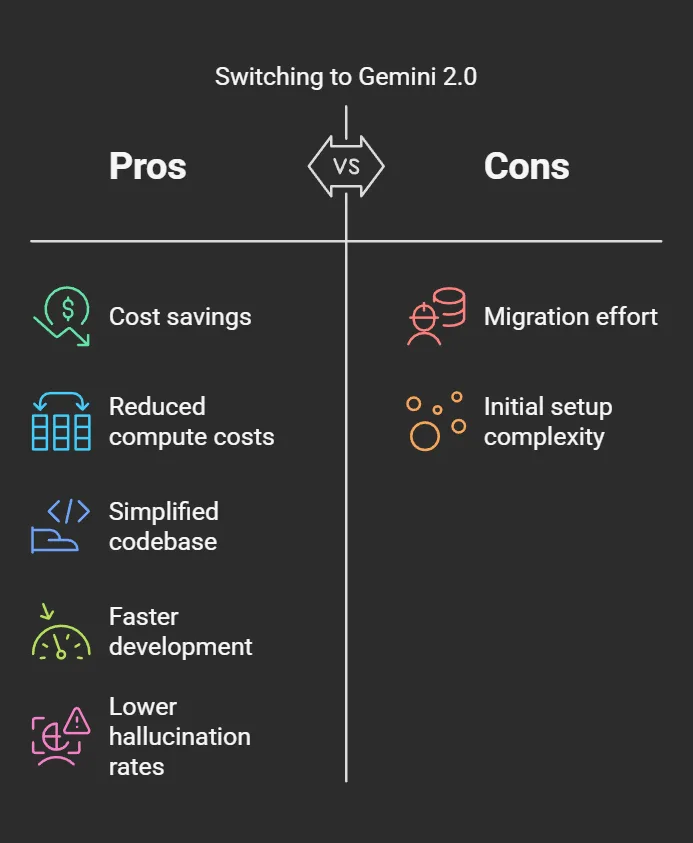
Cost Efficiency
The financial benefits of switching to Gemini 2.0 are significant and multifaceted. Organizations can eliminate vector database costs, which typically range from $0.25 to $4 per gigabyte per month. The parallel processing capabilities of Gemini 2.0 Flash reduce compute costs by 60-70%. Perhaps most significantly, the API costs for Gemini 2.0 Flash are just $0.0005 per 1,000 tokens, compared to $0.002 for traditional RAG pipelines.
Development and Maintenance Simplification
The technical benefits extend beyond pure cost savings. Development teams can significantly reduce their codebase complexity. One SaaS analytics platform reported a 42% reduction in codebase size after migrating from LangChain/RAG to direct Gemini 2.0 integration. This simplification not only speeds up development but also reduces the potential for bugs and makes maintenance more manageable.
Enhanced Accuracy and Reliability
Perhaps the most crucial improvement comes in the form of reduced hallucination rates. Gemini 2.0 Flash demonstrates a hallucination rate of just 0.9%, compared to 3.2% in RAG systems. This improvement is particularly valuable in compliance-sensitive industries where accuracy is paramount.
Real-World Implementation Success Stories
Early adopters of Gemini 2.0 are already seeing remarkable results across various industries. Financial services firms report 50% faster reporting cycles and a 30% reduction in analytical errors after implementing Gemini 2.0-based systems. These improvements translate directly to better decision-making capabilities and increased operational efficiency.
The healthcare sector has seen similar benefits, with medical research organizations reporting more accurate analysis of clinical trial data and faster processing of patient records. The ability to maintain context across entire medical documents has led to more precise diagnoses and better treatment recommendations.
The Future of Document Processing with Gemini 2.0
As impressive as current capabilities are, the future holds even more promise for document processing with Gemini 2.0. Three key trends are emerging that will further enhance its capabilities:

Multi-Model Orchestration
The future of document processing lies in combining Gemini’s processing power with specialized models for specific tasks. This includes advanced format conversion capabilities, such as transforming complex PDFs into more manageable HTML formats while maintaining all crucial information and relationships.
Dynamic Context Management
Future developments will focus on intelligent prioritization of document sections based on query intent. This advancement will make document processing even more efficient and relevant to specific use cases, further improving response times and accuracy.
Self-Improving Systems
Perhaps most exciting is the development of systems that can update their retrieval strategies based on user feedback. This continuous improvement cycle will lead to increasingly accurate and efficient document processing over time.
Implementation Strategies for Gemini 2.0 Adoption
For organizations considering the transition to Gemini 2.0, a structured approach to implementation is crucial for success. Here’s a comprehensive look at the key considerations and best practices for adoption.
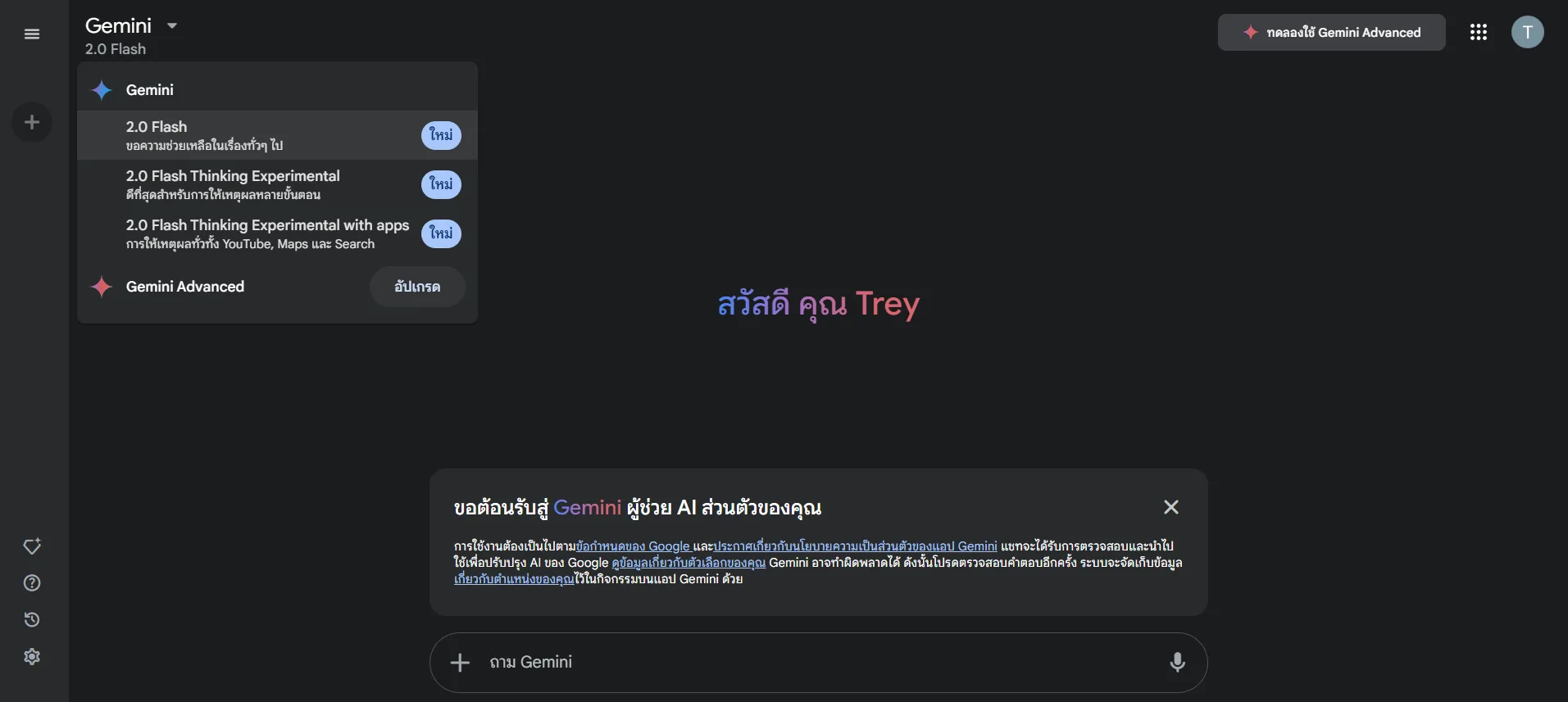
Technical Integration Considerations
The integration of Gemini 2.0 into existing systems requires careful planning but is significantly simpler than maintaining traditional RAG architectures. Organizations should first assess their current document processing needs and identify which applications would benefit most from the transition. The integration process typically focuses on three key areas: API implementation, data flow optimization, and output handling.
With Gemini 2.0’s expanded capabilities, organizations can eliminate many components of their existing RAG infrastructure, including vector databases and chunking mechanisms. This simplification leads to more streamlined architectures and reduced maintenance requirements. However, it’s important to maintain robust error handling and monitoring systems to ensure optimal performance.
Data Migration and Testing
When transitioning from RAG systems to Gemini 2.0, organizations should implement a phased approach to data migration. This involves:
Testing with a subset of documents to validate accuracy and performance Parallel running of both systems during the transition phase Careful validation of results to ensure no loss of functionality Regular performance benchmarking against established metrics
Early testing has shown that organizations typically achieve full migration within 4-6 weeks, with immediate improvements in processing speed and accuracy.
Training and Adaptation
While Gemini 2.0 simplifies many aspects of document processing, teams still need training to make the most of its capabilities. This includes understanding how to:
Structure queries for optimal results Utilize the multimodal processing features effectively Integrate the model’s outputs with existing business processes Monitor and optimize performance over time
Industry-Specific Applications and Benefits
Different sectors are finding unique ways to leverage Gemini 2.0’s capabilities, each with its own set of advantages and considerations.
Financial Services
In the financial sector, Gemini 2.0 is transforming how institutions handle regulatory compliance and risk assessment. Banks and investment firms can now process entire regulatory filings, annual reports, and market analyses as complete documents, maintaining crucial context and relationships. This comprehensive analysis has led to better risk assessment and more informed investment decisions.
Healthcare and Life Sciences
Medical institutions are using Gemini 2.0 to analyze complete patient histories, clinical trial data, and medical research papers without the fragmentation inherent in RAG systems. The ability to maintain context across entire medical documents has improved diagnostic accuracy and treatment planning. The model’s superior handling of medical imagery and lab results alongside text data has proven particularly valuable.
Legal and Compliance
Law firms and compliance departments are benefiting from Gemini 2.0’s ability to process entire legal documents, including complex contracts and regulatory frameworks. The model’s improved accuracy in identifying related clauses and maintaining context across large documents has reduced review times and improved compliance accuracy.
Addressing Common Concerns and Challenges
While the benefits of Gemini 2.0 are clear, organizations may face certain challenges during adoption. Understanding and preparing for these challenges is crucial for successful implementation.
Security and Privacy
Organizations handling sensitive data must ensure proper security measures are in place. While Gemini 2.0 eliminates some security concerns associated with storing vector embeddings, proper data handling and API security remain crucial considerations.
Performance Optimization
Although Gemini 2.0 offers superior performance out of the box, organizations should still optimize their usage patterns for maximum efficiency. This includes proper query structuring and efficient handling of multimodal inputs.
Cost Management
While overall costs are typically lower than traditional RAG systems, organizations should implement proper monitoring and usage optimization to maintain cost efficiency. This includes tracking API usage and implementing appropriate access controls.
Looking Ahead: The Future of Document Processing
As we look to the future, several exciting developments are on the horizon for Gemini 2.0 and document processing technology:
Google is already testing expanded context windows of 2 million tokens, suggesting even greater capabilities are coming Integration with specialized domain models is likely to further improve accuracy in specific industries Advanced visualization capabilities are expected to enhance the model’s ability to process and generate complex visual data
Gemini 2.0 represents more than just an improvement in document processing technology – it marks a fundamental shift in how organizations can handle and analyze information. By eliminating the need for traditional RAG workflows in individual document analysis and simplifying the processing of large document collections, Gemini 2.0 is setting new standards for efficiency, accuracy, and simplicity in document processing.
For organizations still relying on legacy RAG systems, the message is clear: the time to transition to Gemini 2.0 is now. The combination of reduced costs, improved accuracy, and simplified architecture makes a compelling case for adoption. As the technology continues to evolve and improve, those who embrace this change early will be best positioned to benefit from future advancements in the field.
The obsolescence of traditional RAG systems isn’t just a possibility – it’s an inevitability. Gemini 2.0 is leading the way into a new era of document processing, where artificial intelligence can truly understand and analyze documents as humans do, but with greater speed, accuracy, and reliability than ever before.
